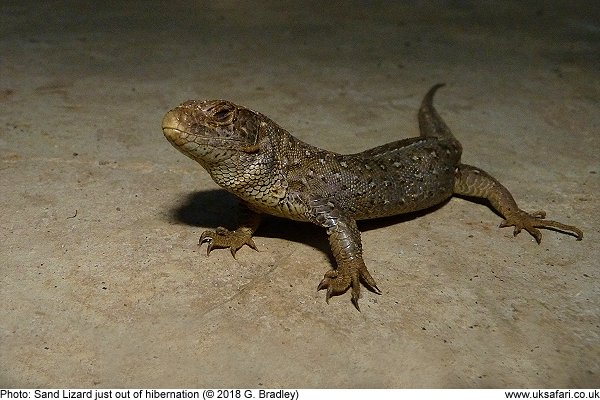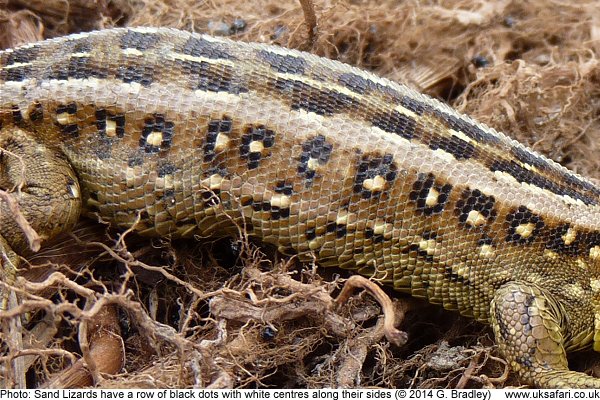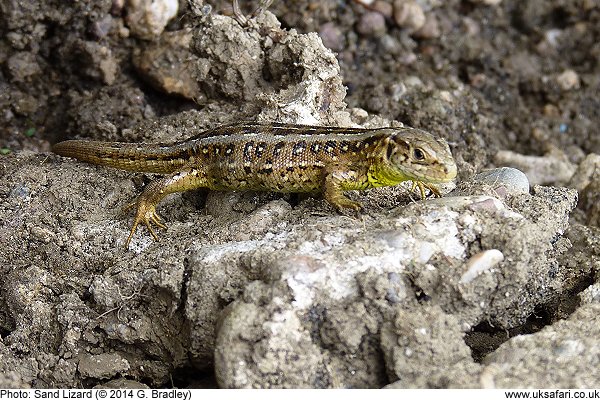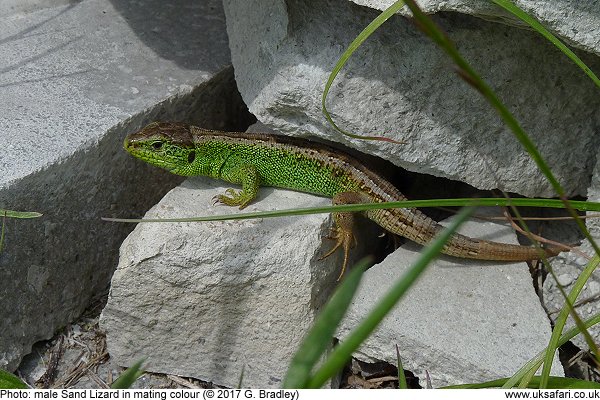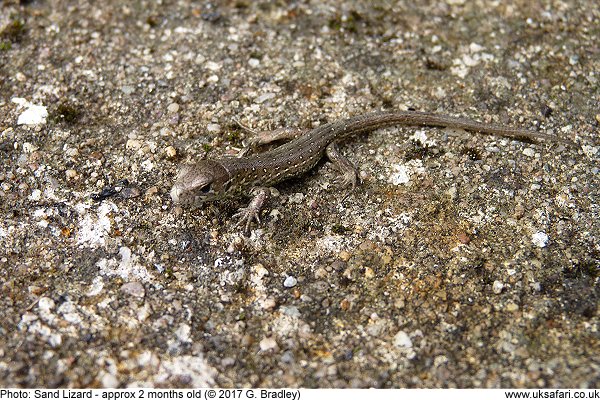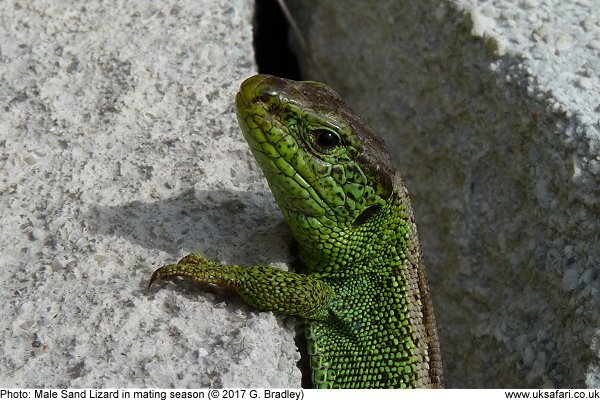 Quick Facts
Quick Facts
Scientific name: Lacerta agilis
Size: Grows to approximately 18cm in length
Distribution: Found in the south and north west of England, and also in north Wales. There have been several introductions in these areas to increase the populations
Months seen: April to October. For the remainder of the year Sand Lizards hibernate in an underground burrow
Life Span: Up to 12 years, but usually less
Habitat: Sandy heathlands, sand dunes and rough grassland
Food: Beetles, spiders and grasshoppers
Special features: Sand lizards are the rarest of our native reptiles, and are protected by law. They can be found in just a few locations which include; the sandy heathlands of Dorset, the sand dunes of Lancashire, and Sherwood Forest (Notts.) near the Great Oak Visitor Centre
Sand Lizards are stockier than Common Lizards, and is slightly longer. The males are a greyish-green colour, while the females are a mottled brown. Both males and females have dark coloured spots along their backs and sides. The dark spots have white centres. During May and June, the sides and belly of the male turn a vivid bright green colour. This green colour fades in the summer.
NOTE: It's a criminal offence to kill or injure any of the UK's native reptiles. Sand Lizards are protected under the Wildlife and Countryside Act of 1981. It is an offence to kill, harm, injure, sell or trade them in any way.
 Related Pages
Related Pages

 Popular Pages
Popular Pages
Amphibians, Bats, Badgers, Beetles, Birds, Birds of Prey, Bumble Bees, Butterflies, Caterpillars, Creepy-Crawlies, Deadly Spiders, Dolphins, Dragonflies, E-Postcards, False Widow Spiders, Free Newsletter, Frogs, Fungi, Garden Spiders, Glow-Worms, Grey Squirrels, Hedgehogs, House Spiders, Ladybirds, Mammals, Marine Mammals, Moths, Owls, Reptiles, Spiders, Toads, Trees, Wildlife Hospitals
© Copyright 2017 G. Bradley - UK Safari | About Us | Links | Contributors


 Sand Lizards
Sand Lizards